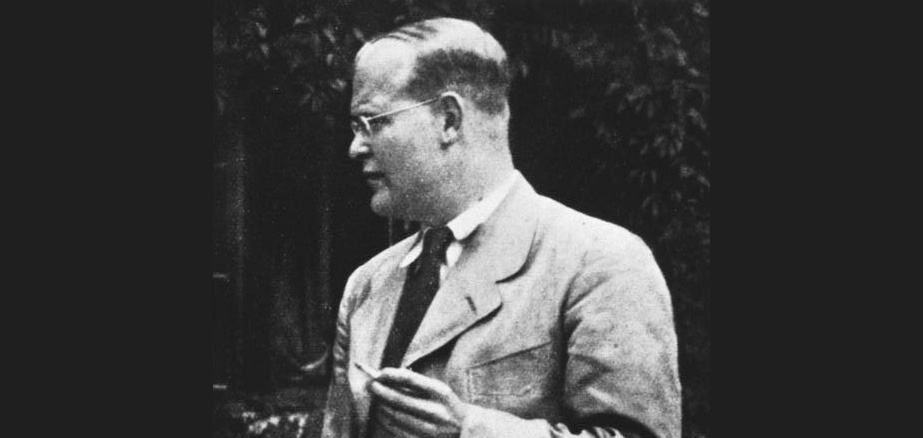
24 Apr Learning From Bonhoeffer
Life Together is a Christian classic that has challenged and guided people’s lives of faith for many decades. But re-reading it in the middle of our own health and economic crisis, after four weeks of lockdown with my two flatmates, has given Bonhoeffer’s words new weight and significance for me. This time of COVID-19 has challenged my own sunny disposition, heightened stress levels, and made me aware of the many gaps in my faith and confidence in Christ. It has raised questions: What am I to do with my sin and failings that have such an impact on those around me? What am I to do with the sin and failings of others? How do I live well in lockdown and in the unknown of life beyond COVID-19? In reading Life Together, and understanding more of Dietrich Bonhoeffer’s life and convictions, I’ve found deep challenge and hope regarding these questions.
Bonhoeffer was born in 1906 in Breslau, Germany. At age 16 he decided he wanted to study theology, and went on to attend, first, the University of Tubingen, before completing his doctoral studies at Berlin University at the age of 21. After a brief stint at New York’s Union Theological Seminary, by 1931 he had returned to Berlin to teach theology, pastor a congregation, and write.
Bonhoeffer was committed to Christian realism, the day-to-day outworking of faith and its demands on us. This commitment led him to be an early critic of Adolf Hitler and of the embrace of his leadership by the mainstream German Church. Bonhoeffer refused to participate in this new German-Christian world and left to pastor two churches in London. And yet, when he was asked to return to Germany and lead a seminary of 25 students living illegally in hidden emergency housing as part of the dissenting (confessing) church, he sensed the call of Christ on his life. He returned to Germany in 1935 and remained there until his death by execution in April 1945 at Flossenburg concentration camp. He was 39 years old.
Life Together, written in 1938, draws on Bonhoeffer’s experiences of living in close proximity with those 25 students. In each chapter, he walks the reader through the significance of life in community with fellow Christians and offers insight into what ministry in community might look like: holding your tongue, proclaiming God’s truth, listening, helping one another, bearing each other’s burdens. He finishes with a chapter on confession and the “joyful sacrament” of Eucharist.
One of Bonhoeffer’s convictions is the sanctity of Christian fellowship. He never takes life together with his brothers and sisters in Christ for granted:
“It is easily forgotten that the fellowship of Christian brethren is a gift of grace, a gift of the Kingdom of God that any day may be taken from us, that the time that still separates us from utter loneliness may be brief indeed… It is grace, nothing but grace, that we are allowed to live in community with Christian brethren.” (p.20)
These words carry a deep significance for us in our own crisis. I now have a small insight into what he elsewhere calls the “scattered lonely”. Under strict social distancing, we have not met with our church communities, families, or friends, nor have we received the sacraments. Even as we move down the alert levels towards greater freedom of movement, the ease of our old lives together–of hugging and shaking hands and sitting side-by-side in church–feels strange and other-worldly. What will it be like to return to our old creature comforts? What type of life together will we be returning to?
This longing to be together in person is nothing to be ashamed of, Bonhoeffer reminds us. We are physical beings who yearn for physical connection with others. This is how God made us. Indeed, our physical bodies, created by God, have been sanctified and embraced by the incarnation in the person of Jesus. The body is God’s good creation, and it is not wrong to long to be physically close to those we love.
Bonhoeffer seeks not only to affirm our desire to return physically to one another but also to help us make sense of what to do when we are together. With our messy sin, fractured relationships, petty arguments, deep frustrations, and anger with one another, I find myself asking, what does it mean to live with–and actually love–each other well?
In what you might discover as true “Bonhoeffer style”, the answer always lies in Jesus Christ. It is the Word of God who invites us into fellowship with him and consequently fellowship with one another. It is Christ who gives us the means and grace to forgive each other’s faults and to love each other, even in the midst of our own pain and frustration. This kind of fellowship with one another is not idealistic or pretty, in fact, it is mostly real and messy.
“He who loves his dream of a community more than the Christian community itself becomes a destroyer of the latter, even though his personal intentions may be ever so honest and earnest and sacrificial. God hates visionary dreaming; it makes the dreamer proud and pretentious.” (p.27)
Bonhoeffer recognises a danger in confusing ideals for divine reality. Christian community requires something of us, of me. It is not the ideal, lofty vision of Christian life that unites us–this is insufficient to carry us through the work of relationship building. What truly unites us is the day-to-day reality of being united by the blood of Christ in the middle of our muck and sin and frustrations.
Instead of fixating on the elusive ideal, Bonhoeffer encourages us towards gratitude for each day and for the small gifts of grace towards each other we’ve been given.
“If we do not give thanks daily for the Christian fellowship in which we have been placed, even where there is no great experience, no discoverable riches, but much weakness, small faith, and difficulty; if on the contrary we only keep complaining to God that everything is so paltry and petty, so far from what we expected, then we hinder God from letting our fellowship grow according to the measure and riches which are there for us all in Jesus Christ.” (p.29)
It is here that Bonhoeffer’s pastoral words speak truth to my own, and perhaps many of our, current situations. Our call is to give thanks for the small ways we have been able to love one another, insignificant as they may seem, and to rest assured that God is at work shaping and sanctifying us through these countless small graces. When I speak with a sharp tongue to my fiancé, when I’m tired and testy over Zoom calls, when I’m stressed and worried about the health and economic future of Aotearoa, when I fail to serve those I’m living with and yet expect them to serve me: in all of these moments, I am able to receive God’s grace and know that I can in turn extend grace to them.
“Even when sin and misunderstanding burden the communal life, is not the sinning brother still a brother, with whom I, too, stand under the Word of Christ?” (p.28)
Bonhoeffer is constantly returning to the themes of love and community. In Christian fellowship we respond to Christ’s love and mercy; we are united together by the blood of Christ who redeems and transforms us. That is the lens through which we must see one another.
In Life Together, Bonhoeffer paints a compelling and unequivocal vision of the demands of Christian life and community. Woven through the book is a call to return to Christ as the author and perfector of our faith and the one for whom Christian community is for. We are to give God our silence at the beginning and end of the day, because the first and last word belong to him. We are to sit with Scripture, trusting that it will speak to us and knowing that quick, bite-sized verses will not feed our spiritual hunger for the Word of God. We are to pray, together and alone, sing, work hard, intercede, and meditate. These are some of the calls of the Christian life, and of life together.
Bonhoeffer’s commitment to his fellow ministers to the point of death, his unwavering ethics and loyalty to Christ were extraordinary, but he would not describe them as such. Six years before his arrest, Bonhoeffer wrote “When Christ calls a man, he bids him come and die”. He ultimately followed this call towards his own death in the final days of World War II.
On each page of Life Together, Bonhoeffer’s heart towards Christ and the reader remains the same. He longs for us to see all of our lives as being caught up in God’s grace and to recognise there is no sin (ours or others) not covered by God’s love and forgiveness. It is our gift take each part of our day and each relationship and offer them back to God as an offering of love.
I will finish with Bonhoeffer’s own words, encouraging us to see each other (and ourselves) in the light of Christ:
“God did not make this person as I would have made him. He did not give him to me as a brother for me to dominate and control, but in order that I might find above him the Creator… To me the sight [of God’s image in other] may seem strange, even ungodly. But God creates every man in the likeness of His Son, the Crucified. After all, even that image certainly looked strange and ungodly to me before I grasped it.” (p.93)
(Image: Dietrich Bonhoeffer, by Unknown, licenced under CC BY 2.0)

